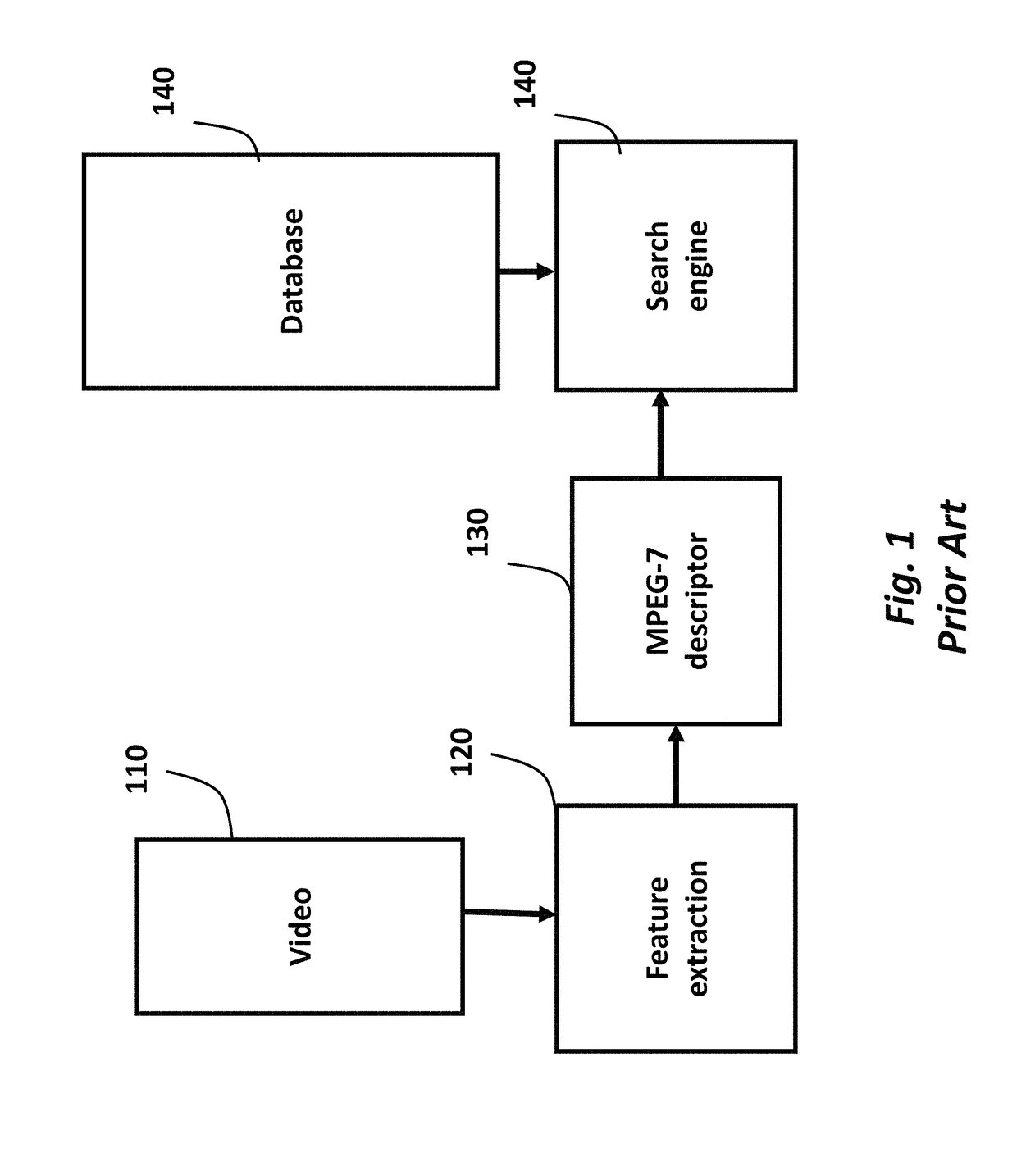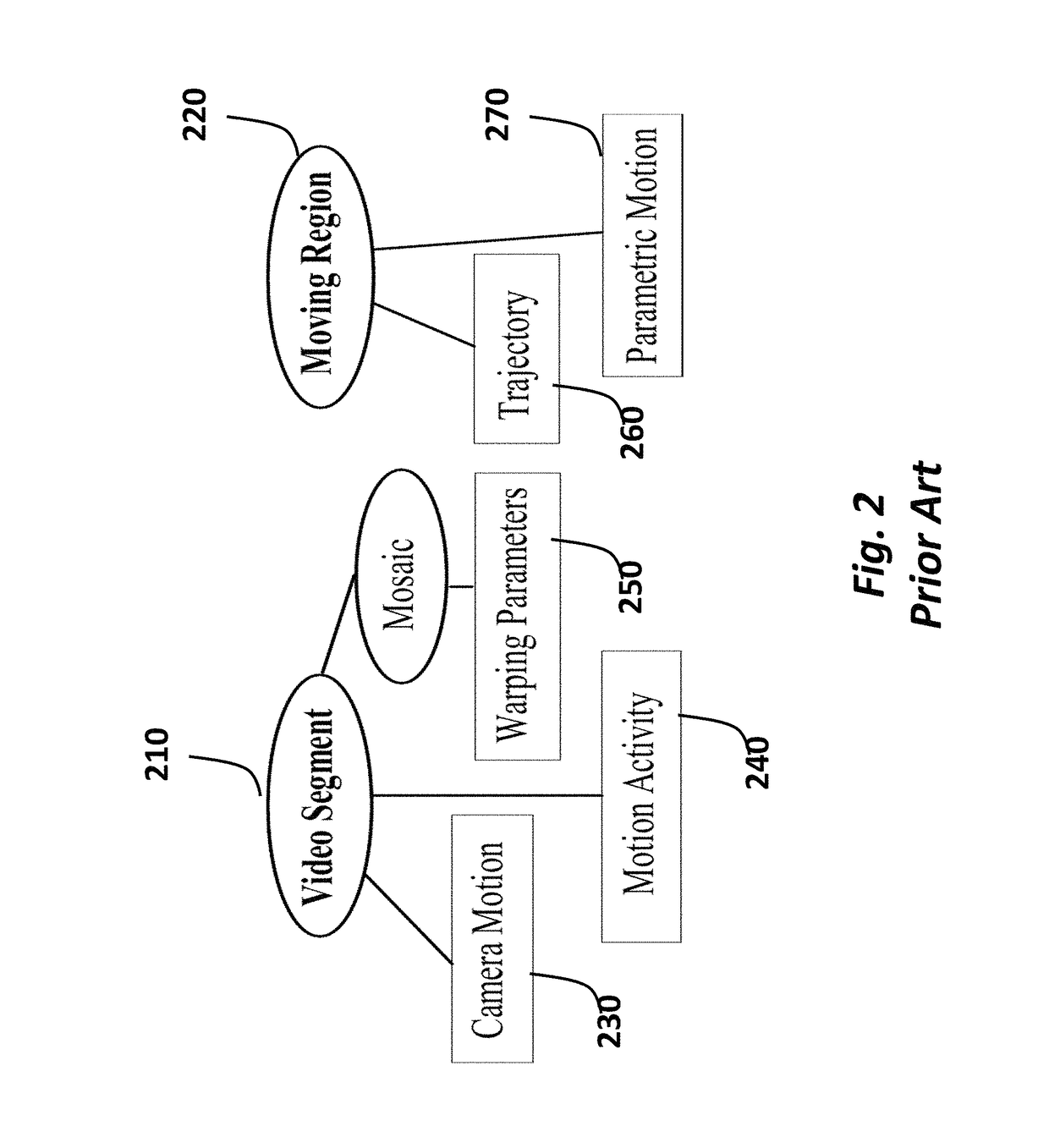Method and apparatus for keypoint trajectory coding on compact descriptor for video analysis
a compact descriptor and video analysis technology, applied in the field of video analysis, can solve the problems of not being able to easily extend conventional image descriptors to derive video descriptors, and not being able to remove features, so as to achieve the effect of limiting the cost of implementation
- Summary
- Abstract
- Description
- Claims
- Application Information
AI Technical Summary
Benefits of technology
Problems solved by technology
Method used
Image
Examples
Embodiment Construction
[0043]FIG. 3 shows a method and system for video analysis according to embodiments of the invention. The video input 301 to the system is conveyed to a “keypoint / feature detection” module 305, then the keypoint / feature are matched via block 310. This leads to keypoint trajectories information 315. In one embodiment of the invention, we use a constrained matrix factorization for feature matching as an option to implement block 310. It is understood that other know methods can also be used to extract the keypoint trajectories.
[0044]The detected feature descriptors and keypoint trajectories are then encoded 320 and the bitstream 325 are stored or transmitted over network 330. The received bitstream 335 can later be decoded 340. Finally, the reconstructed feature descriptors and keypoint trajectories 345 are fed to a video analysis module 350 at the decoder and output the analysis results 355, e.g., semantics understanding about the video. The steps of the method can be performed in a p...
PUM
 Login to View More
Login to View More Abstract
Description
Claims
Application Information
 Login to View More
Login to View More - R&D
- Intellectual Property
- Life Sciences
- Materials
- Tech Scout
- Unparalleled Data Quality
- Higher Quality Content
- 60% Fewer Hallucinations
Browse by: Latest US Patents, China's latest patents, Technical Efficacy Thesaurus, Application Domain, Technology Topic, Popular Technical Reports.
© 2025 PatSnap. All rights reserved.Legal|Privacy policy|Modern Slavery Act Transparency Statement|Sitemap|About US| Contact US: help@patsnap.com



